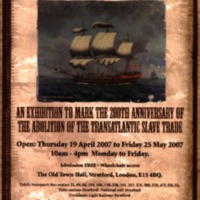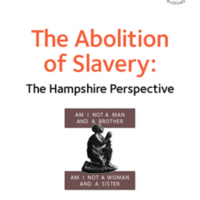
The Wickedest of Cargoes
London Borough of Newham Council led “The Wickedest of Cargoes…”, an exhibition at Stratford Town Hall, which used local museum and archive collections to explore the history of the slave trade and abolition. It looked at the history of slavery through different societies and cultures, and especially the Barbary pirates who enslaved seamen and passengers from ships on the west coast of North Africa. The exhibition explored the transatlantic slave trade and its abolition from a local perspective, focusing on the large Quaker community in West Ham and, in particular, John Fothergill and Samuel Gurney. Newham has many residents from an African Caribbean background, who were consulted in the development of the exhibition. Addressing the legacies of slavery, the exhibition looked at the rising Black population of the borough through history and the importance of the Coloured Men’s Institute in Canning Town, set up as a place where Black families could meet.

The Abolition of Slavery: The Hampshire Perspective
A touring exhibition exploring Hampshire's links with slave ownership and the abolition campaign was produced by (and featured material from) Hampshire Museums and Archives Service and Hampshire Record Office. The exhibition was on show in the Record Office foyer, before travelling to museums, schools and community centres around the county. The exhibition revealed that there were slave owners living in places in Hampshire such as the village of Hurstbourne Tarrant, and told the story of a slave-trading voyage in 1700 led and financed by men from the Titchfield area. Black servants, very likely former slaves, could be found in unlikely places such as Martyr Worthy and Bramdean. The abolition campaign was fought in the columns of the Hampshire Chronicle and the Hampshire Telegraph, and communities as diverse as Portsmouth, Whitchurch and Fordingbridge sent in petitions to Parliament on the subject. The exhibition also mentioned white slaves taken from the English coast by Barbary pirates, and the testimony of a group of emancipated slaves from Cuba who arrived in Southampton in 1855 on their way to Lucomi in Africa.